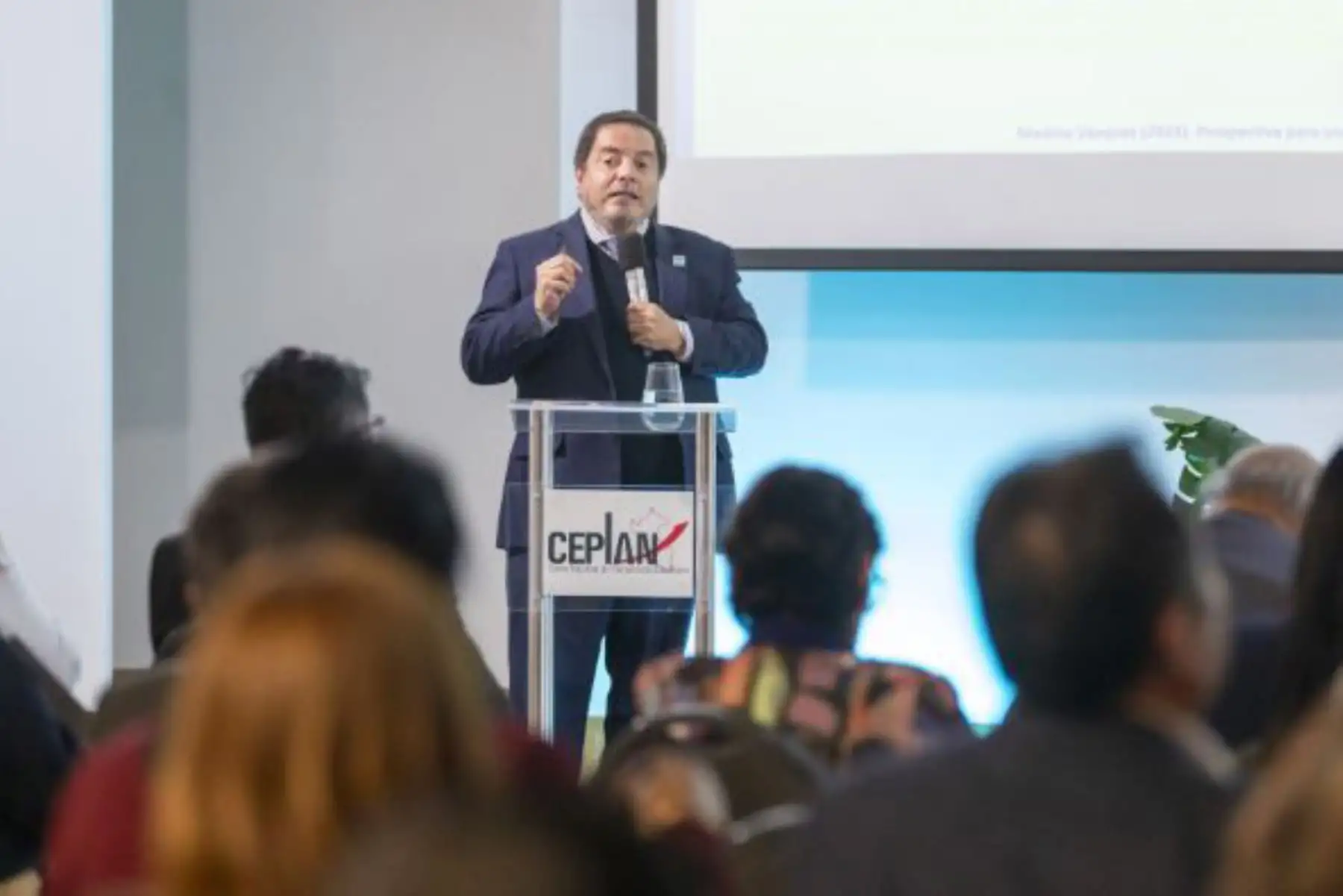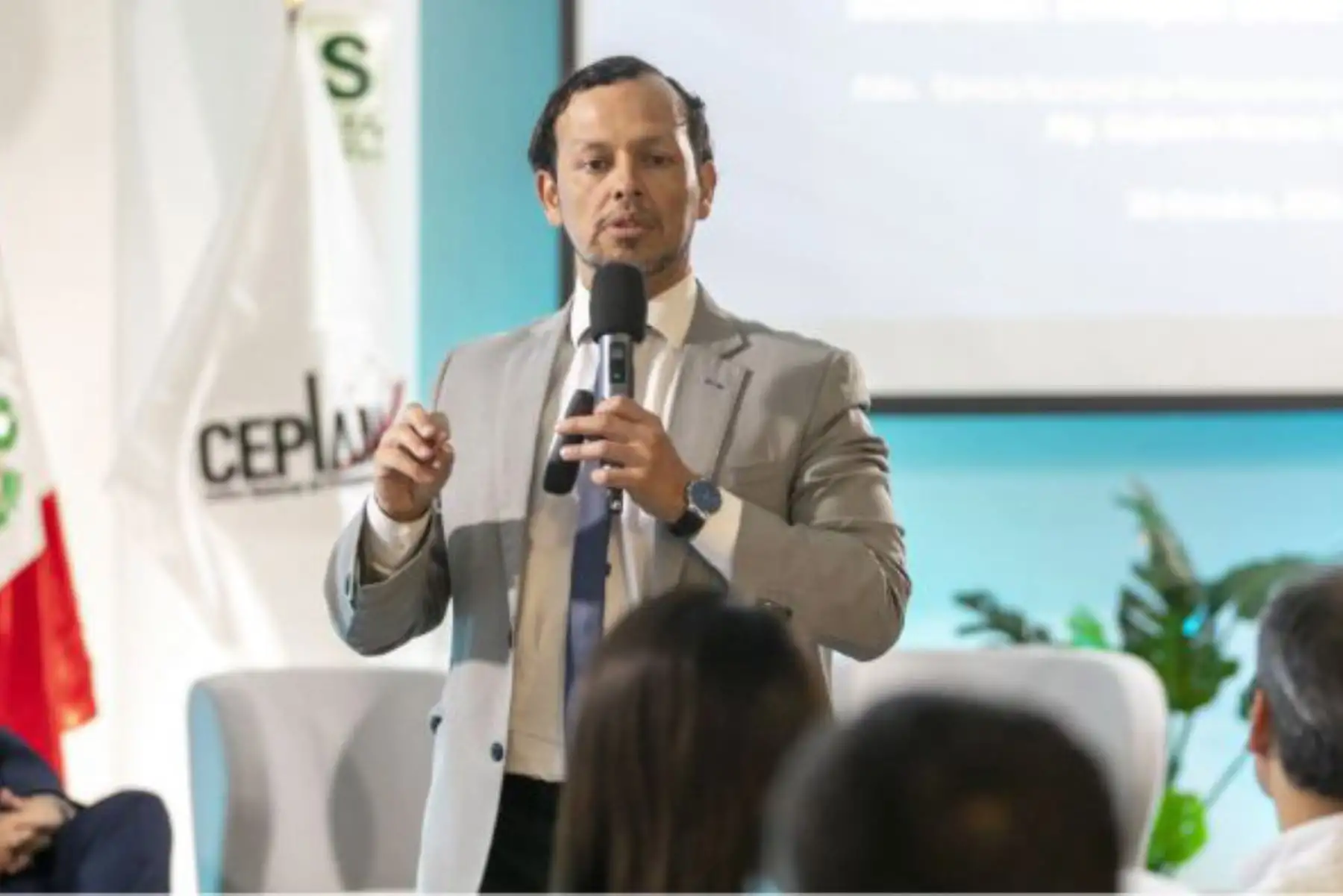The Economic Commission for Latin America and the Caribbean (ECLAC) highlighed the efforts of Peru in order to get a better and efficient public sector, through the National Vision to 20250 built by the National Center for Strategic Planning (Ceplan).
Medina explained that foresight explores potential futures, while strategic monitoring tracks present-day changes, together, they form a virtuous cycle that helps governments anticipate crises and build sustainable, resilient development pathways.
Citing examples in the Latin American region, he referenced Brazil 2050, which aims for a cross-party national vision covering economic, environmental, and social objectives; and Chile 2050, driven by civil society through thematic roundtables on health, energy, and education.
He also praised Peru for its National Vision to 2050 and its use of real-time monitoring dashboards, calling it a regional model.
"Peru is one of the countries that has best understood this, thanks to Ceplan," Medina stated.
The ECLAC representative emphasized the need to consolidate foresight systems with stable methods, processes, and institutions to avoid political discontinuities and strengthen anticipatory governance, linking present decisions with future outcomes.

Medina warned that the region continues to face persistent structural traps, including low economic growth, high inequality, and weak institutions.
These challenges, he said, hinder progress toward achieving the Sustainable Development Goals (SDGs) by 2030, highlighting the urgency of strengthening foresight capabilities to support long-term, high-impact decision-making.
A shift toward anticipatory governance could help Peru reduce social gaps, improve public-sector performance, and rebuild trust in institutions, while strengthening its leadership in strategic planning for sustainable development, was the central message of the aforementioned conference hosted by Ceplan.
Peru's leadership
Following the keynote, Ceplan President Giofianni Peirano noted that Peru leads Latin America with its National Strategic Development Plan (PEDN) to 2050, approved in 2022 and developed collaboratively across the National Strategic Planning System (Sinaplan).

"We did this together," Peirano said, highlighting that the PEDN includes 392 indicators to measure national progress, surpassing previous planning efforts.
Peirano also underscored the value of monitoring dashboards that display physical and financial targets using an intuitive color system: red for alerts, amber for partial progress, and green for goals achieved. These tools, he said, enable citizens to easily understand the country’s progress without technical expertise.
"If we can see the speedometer, we know whether we’re doing well or not," he added, comparing the dashboards to popular mobile apps like Plin or Yape that simplify access to information.
Peirano further highlighted Ceplan’s National Foresight Observatory —the only one of its kind in Latin America— which compiles more than 5,000 data files aimed at anticipating key shifts, such as rising natural-resource prices. He pointed to gold as an example, noting that increased revenues could help reduce gaps in healthcare, water access, and transportation.
Looking ahead, he announced efforts to integrate Peru’s planning, budgeting, and public-investment systems using data analytics and artificial intelligence, advancing evidence-based decision-making and ensuring more efficient use of public resources.